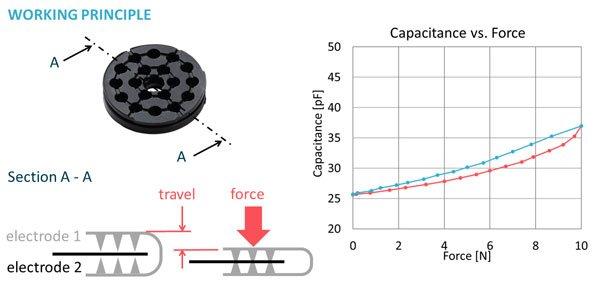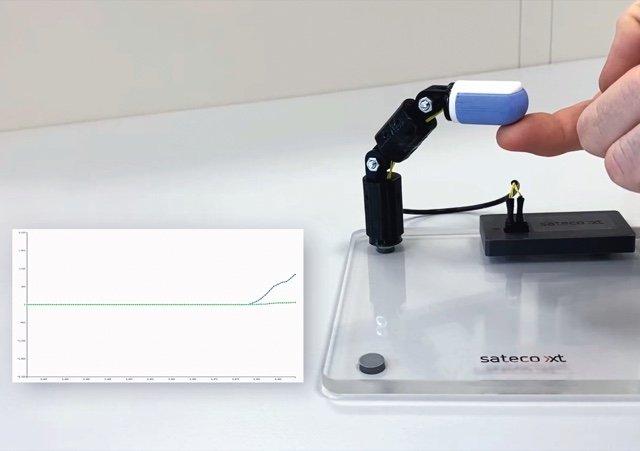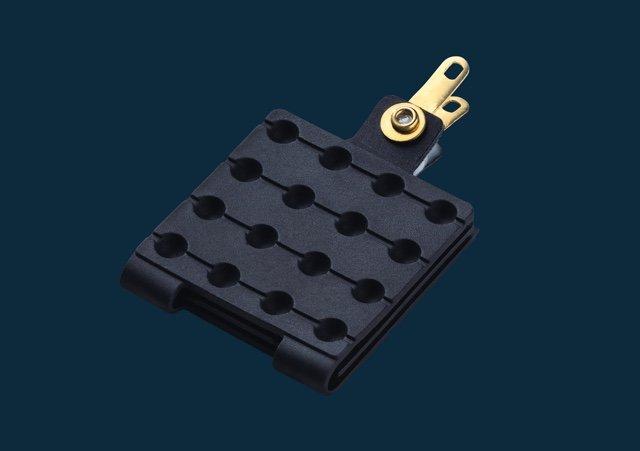-
Kurage and Sateco: Jointly breaking new ground for prostheses
French startup Kurage is an industry leader in combining innovative medical technology and top-class sports in a more inclusive world. It uses intelligent products to help people with limited mobility move their paralyzed limbs. One key element of their neuroprosthesis is the silicone force sensor SXTSC1 from Sateco. The sensor is integrated into the sole of a shoe and provides data on walking behavior. This information is evaluated by an AI-based algorithm that powers a system of neuromuscular electrostimulation electrodes. As a result, the system is able to reproduce functional movements in a personalized and secure manner to offset flaws in the sensomotoric performance of the movement apparatus. “We have…
-
Molded elastic sensors: from scale-up to commercialization
While stretchable electronics is most commonly realized by printing, this paper shows an alternative approach using proven elastomer molding technology. The design and manufacturing of a soft capacitive sensor is shown which can continuously measure both touch and compressive force. It can be shaped three-dimensionally, and is suitable for various applications such as automotive, VR, AR, gaming, robotics, medical technology and automation. The intelligent electronic skin The human skin has an extraordinarily fine and complex sensor system for sensing touch and forces, which enables people to work intuitively and precisely. The material silicone comes very close to the mechanical properties of the skin. By properly designing the shape and conductivity…
-
Capacitive silicone force sensor SXTSC by Sateco makes gripping safe and dexterous
The human hand exhibits a dexterity yet unmatched by technology. Force sensors can close this gap by offering feedback on the grip force, thus avoiding damage to delicate and fragile objects such as food and human body. The elastomer sensor works according to the capacitive operating principle and can continuously measure both touch and compressive force. It is soft and flexible, can be shaped threedimensionally, and is suitable for various applications in agriculture, food, electronics, surgery and generally in cobots and prostethics. Both the sensor’s footprint and dimensions can be freely designed. As a result, it can be customized to curved surfaces and integrated seamlessly between the body structure and…
-
Capacitive silicone force sensor SXTSC by Sateco makes gripping safe and dexterous
The human hand exhibits a dexterity yet unmatched by technology. Force sensors can close this gap by offering feedback on the grip force, thus avoiding damage to delicate and fragile objects such as food and human body. The elastomer sensor works according to the capacitive operating principle and can continuously measure both touch and compressive force. It is soft and flexible, can be shaped three-dimensionally, and is suitable for various applications in agriculture, food, electronics, surgery and generally in cobots and prostethics. Both the sensor’s footprint and dimensions can be freely designed. As a result, it can be customized to curved surfaces and integrated seamlessly between the body structure and…
-
Appealing to the senses – SXTA silicone actuators by Sateco
The dielectric elastomer actuators (DEA), also known as artificial muscles or electroactive polymers (EAP), can create both haptic and tactile feedback. They are quiet, light, and suitable for many different applications such as automotive, VR, AR, gaming, robotics and general industry. The base of the stack actuators is freely selectable and can be customized to the available space. Its soft material flexibly adapts itself to curved surfaces and enables its seamless integration between the substrate and surface. Based on the electrostatic operating principle, the silicone actuators require little energy to maintain their positions. This allows for long-lasting battery operation, which is an important point for wearable devices. The actuators‘ elastomer…




